Learn how to organize your inbox by using different colored flags in the Apple Mail app on your iPhone, iPad, or Mac to highlight specific emails.
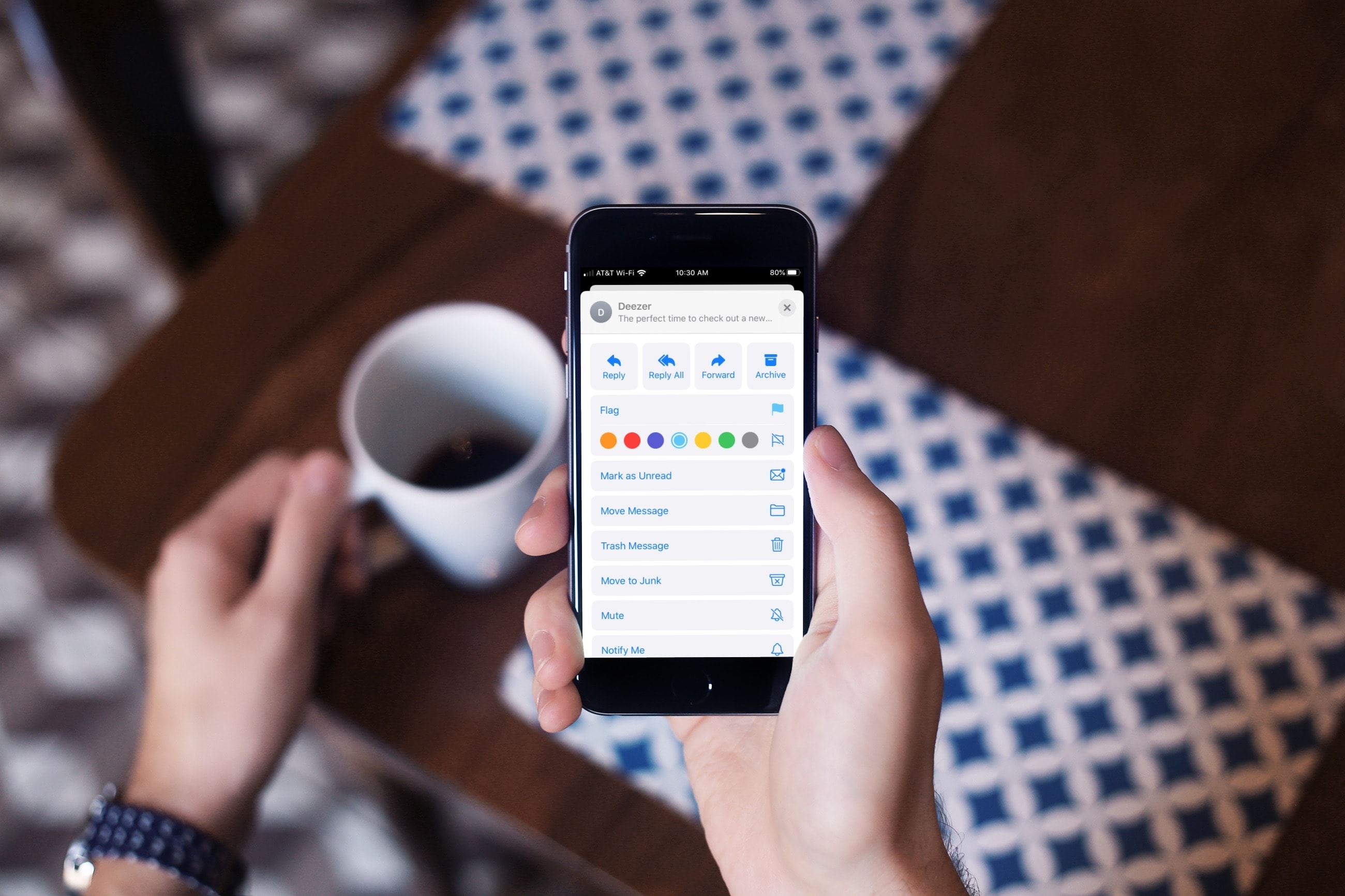
There are all sorts of ways to manage your inbox in the Mail app, but if you’re struggling to keep things organized, one feature worth checking out is Flags. Flags in Mail are useful for making certain email messages stand out.
Additionally, you’re not limited to just one type of flag—you can use different colored flags for various types of emails.
Flagging emails for follow-up or priority not only highlights them in your inbox but also automatically places them in the Flagged folder for quick and convenient access.
Flag an email on iPhone and iPad
There are a few different ways to do this.
From the inbox
- Swipe left on an email in your inbox and tap Flag (this will add the last used flag color).
- If you don’t see the Flag button (explained later), tap More and then select Flag. If you want to use different colored flags to distinguish importance or organize your messages, simply pick one of the colored dots, such as orange, red, purple, teal, yellow, green, or gray.
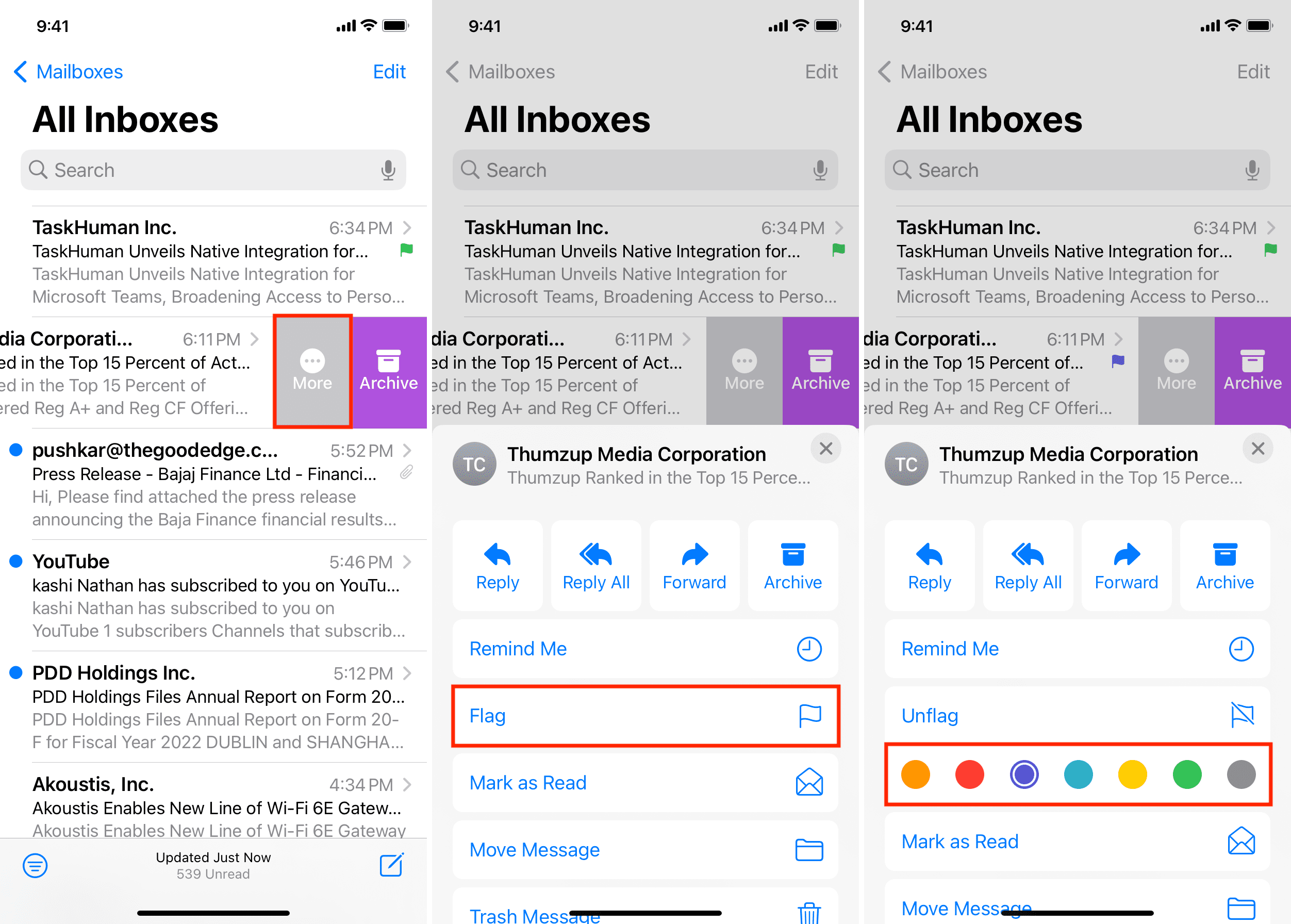
From inside an email
- Select an email to open it.
- Tap the Reply arrow on the bottom right.
- Tap Flag, and when the submenu opens, pick a color.
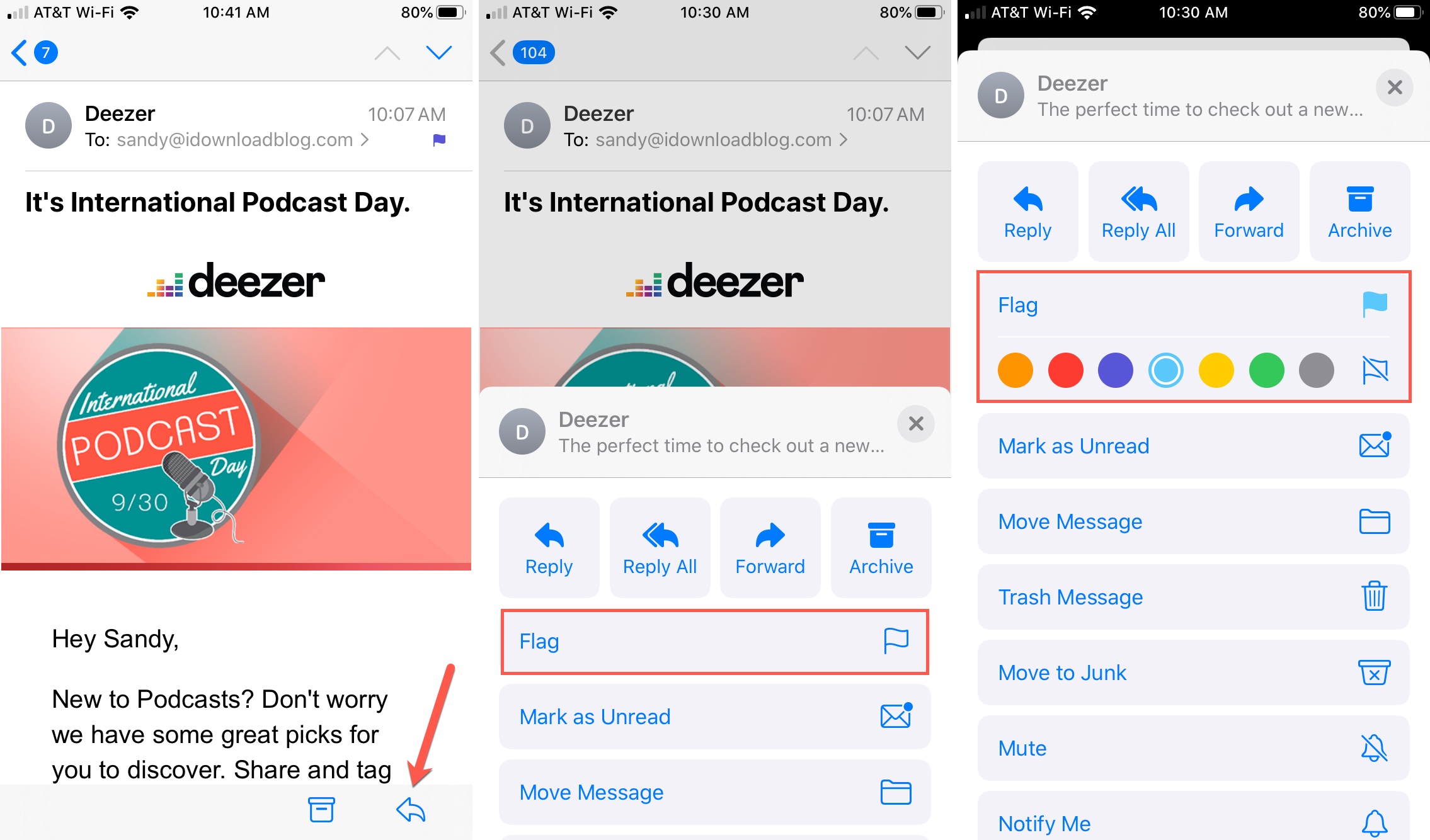
Touch and hold an email
- Open the Mail app and touch & hold an email until a menu pops up.
- Tap Mark > Flag, and it will add the last used flag color.
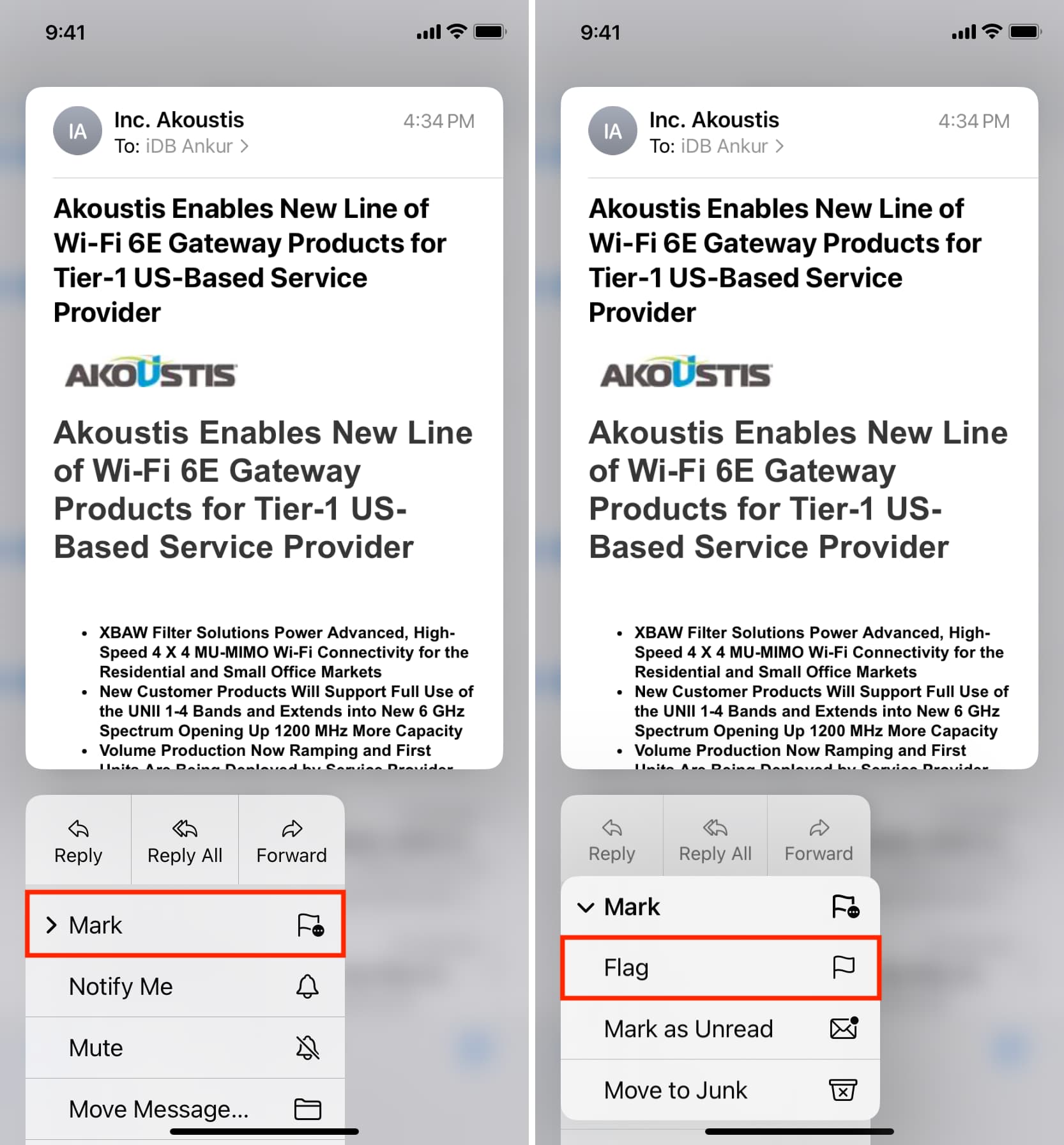
Swipe left or right to flag an email
- Open Settings on your iPhone or iPad and tap Apps > Mail.
- Tap Swipe Options.
- Pick Swipe Left or Swipe Right and select Flag.
- Now, open the Mail app and swipe left or right (based on what you selected in the above step), and you will see an option to Flag/Unflag the email.
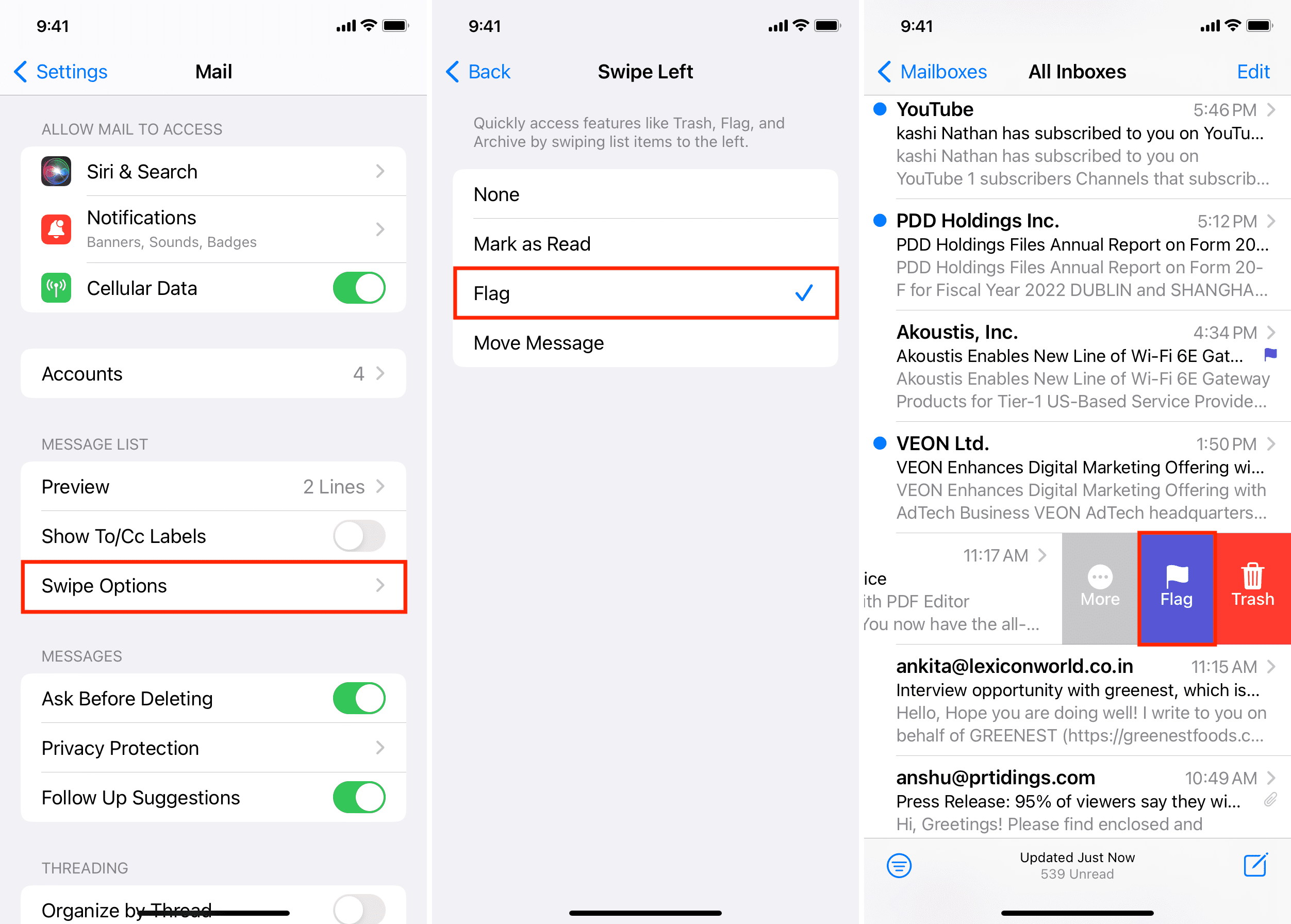
Once you select a flag color, that color will be the new default flag color for your messages, but you can still change the color for a particular email by re-following the steps and selecting any other flag color.
Flag an email on Mac
Just like iOS, you have more than one way to flag emails on macOS.
- Select an email in the Apple Mail app on your Mac.
- Click Message > Flag and pick a color.
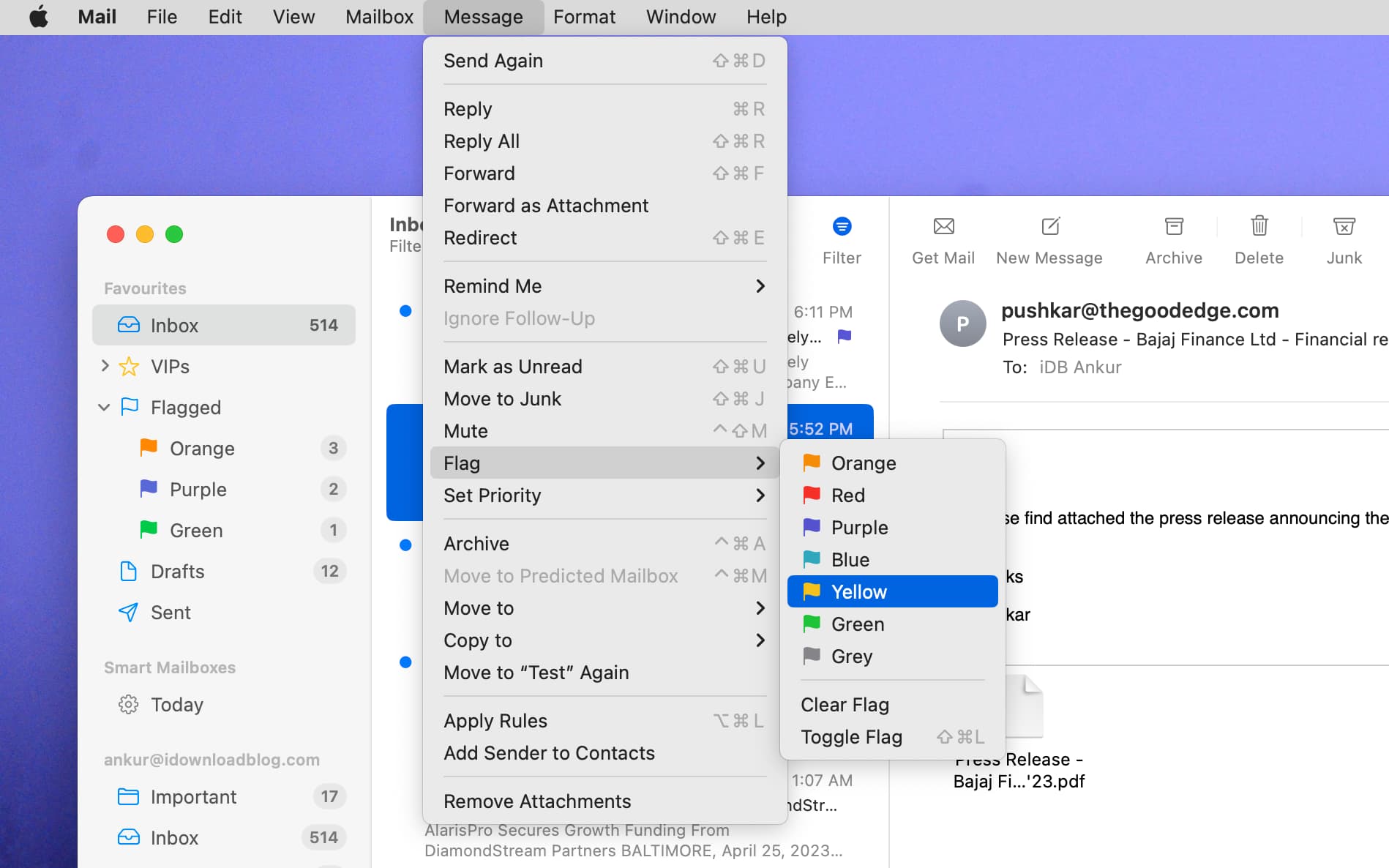
From the Mail app toolbar
- Open an email in the Mail app.
- Click the flag icon to add a flag, or hit the tiny arrow next to it to flag it with a different color.
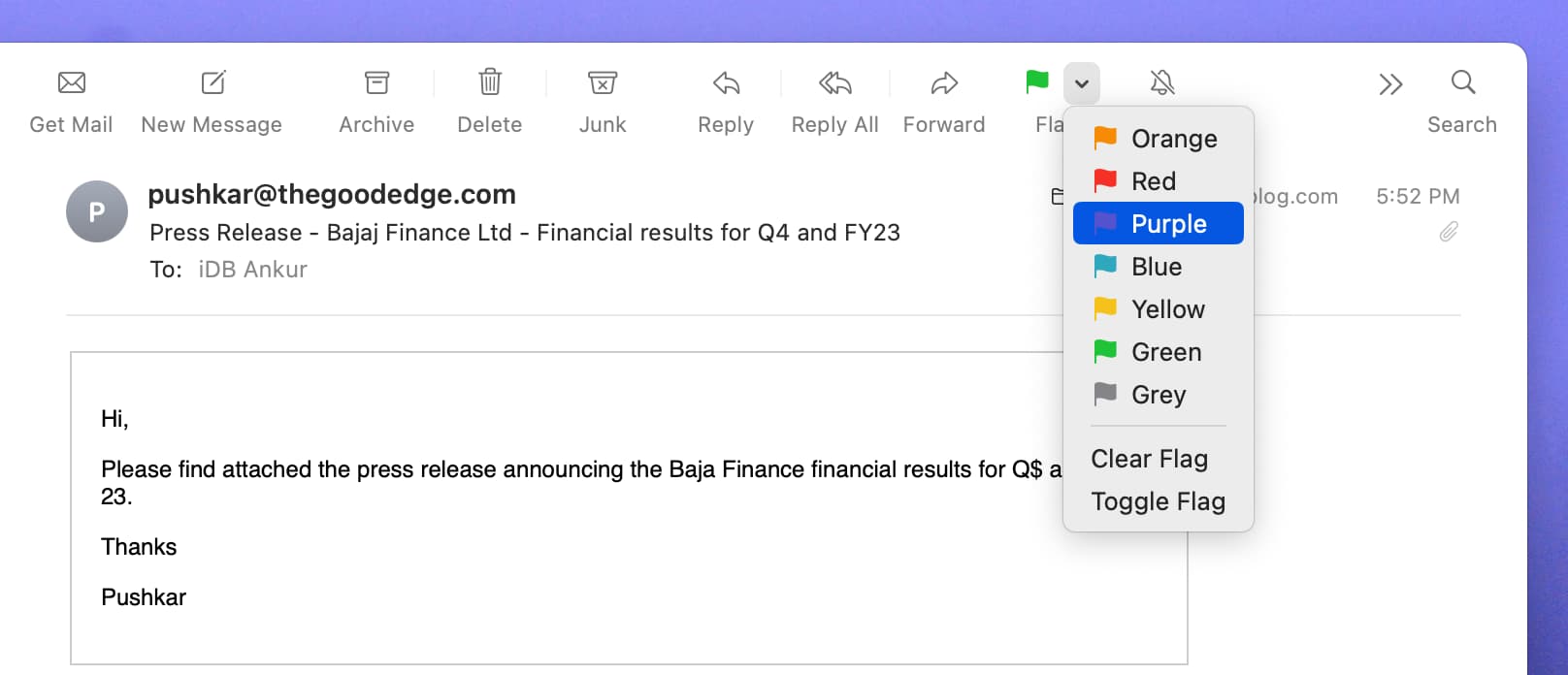
Right-click or Control-click
- Right-click over one of the emails in your inbox. You can also hold the Control key and click once.
- Pick a colored flag from the menu.
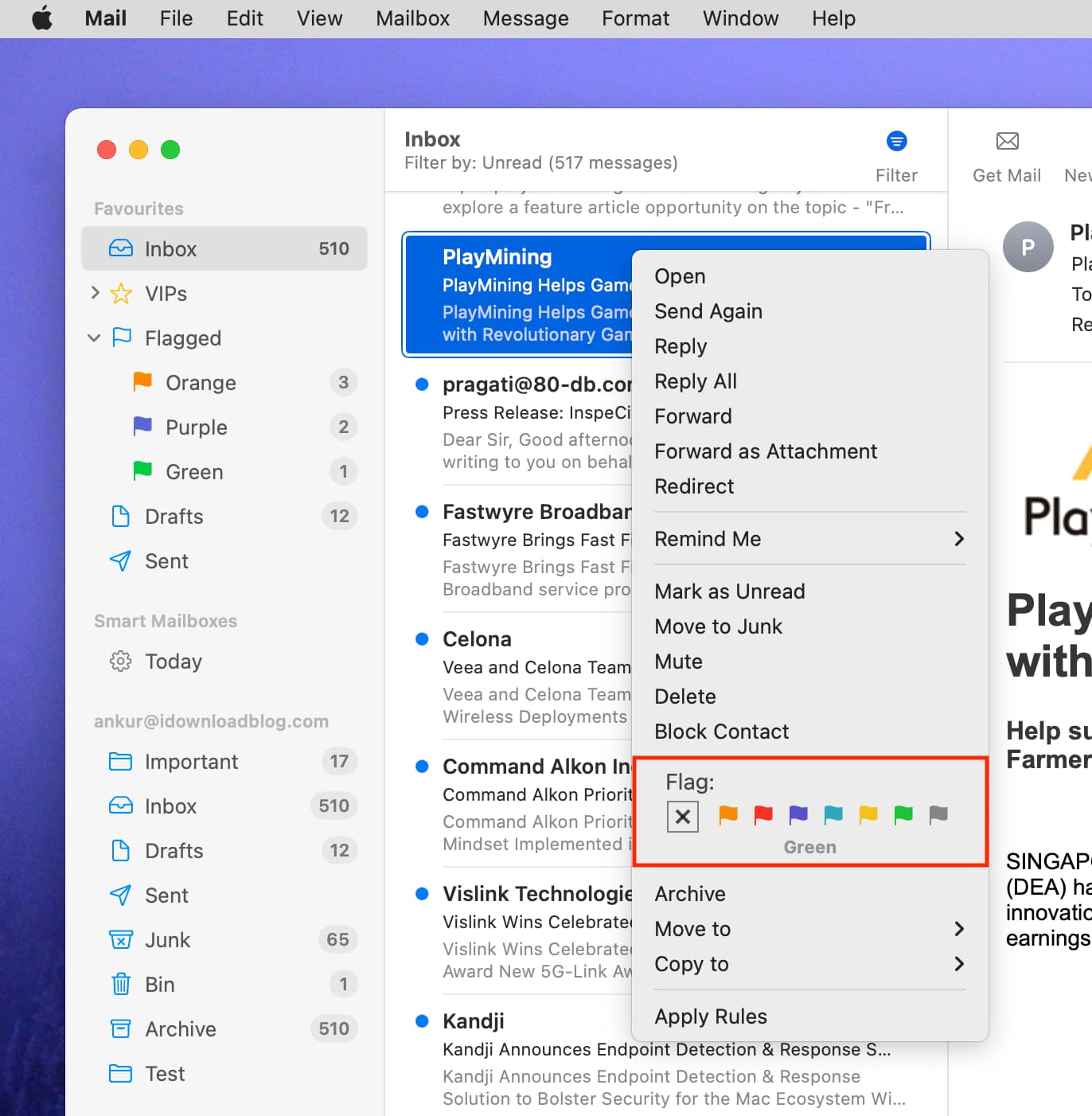
View flagged emails
On iPhone and iPad
- Open the Mail app and tap <Mailboxes in the top left.
- Select Flagged to see all your flagged emails in one place.
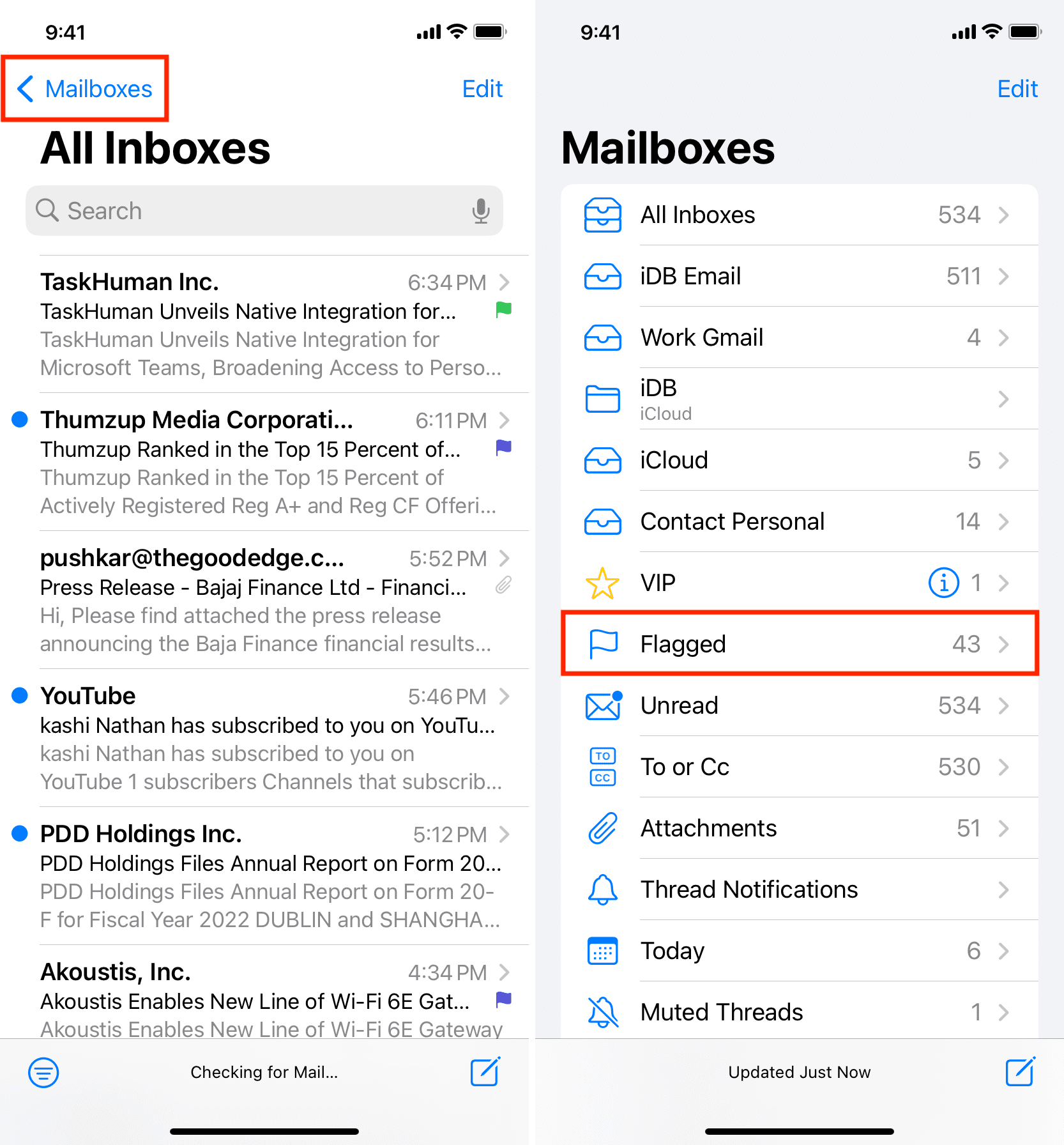
If you don’t see the Flagged option, tap Edit, check the box for Flagged, and tap Done.
Aside from this, you’ll see each colored flag in your Inbox.

On Mac
- Open the Mail app on your Mac.
- Select Flagged from the Mail sidebar. If you don’t see the sidebar, click View > Show Sidebar from the top menu bar.
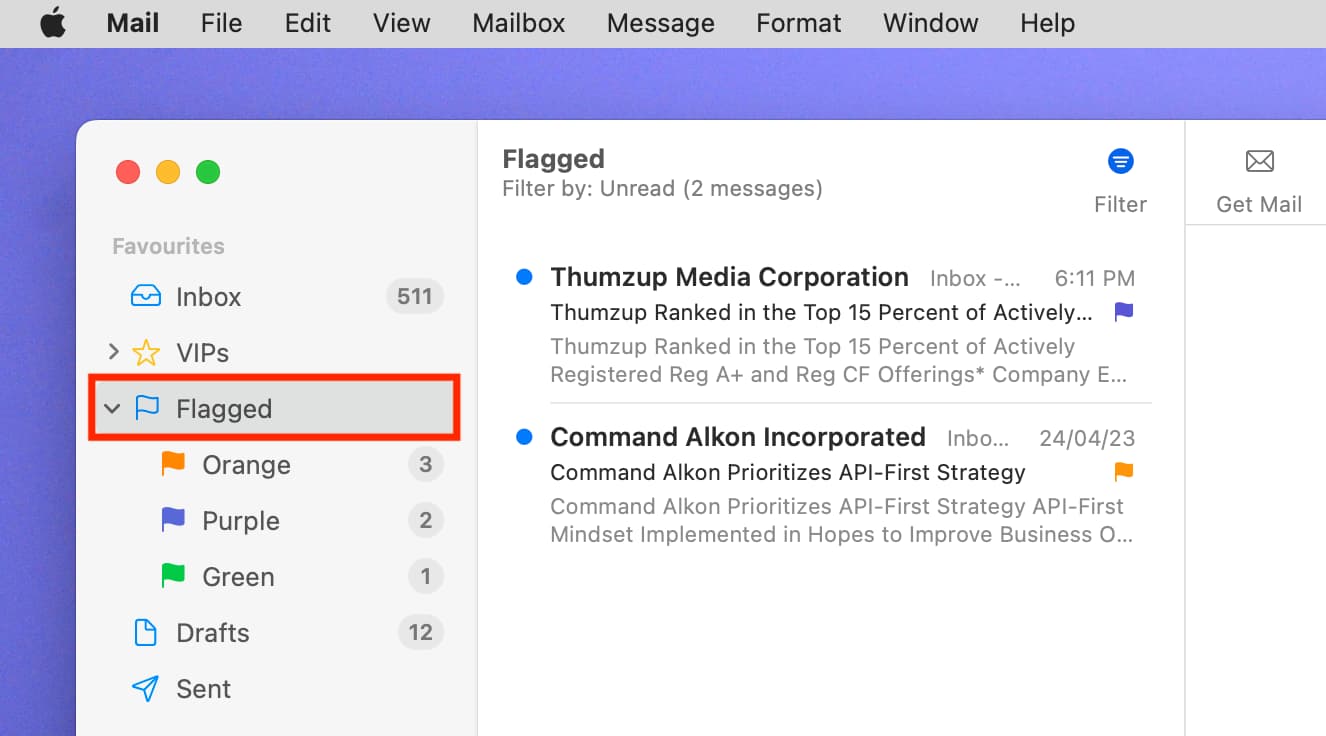
Rename flags
Now that you know how to apply flags and see flagged messages, it’s time to put them to good use. By default, the names of the flags are their colors, but to better organize your inbox, try giving them meaningful names instead.
You don’t see the names of the flags on iPhone or iPad, so you will want to take care of this on your Mac.
Select the Flagged Mailbox in your Mailbox List and click the arrow next to it to expand it. There are a few ways to change the flag name. Note: You may see the arrow for Flagged only after you have flagged at least two emails with different colors.
The easiest way to rename a flag is to select it in the Mailbox List, click the current name, enter the new name, and hit Return.
You can also right-click the flag and choose Rename Mailbox or click Mailbox > Rename Mailbox from the menu bar.

Tips for renaming flags
The key to renaming flags in Mail is to make those names significant. If you’re going to use flags to distinguish emails relating to projects, for example, you can use the names of the projects. Or, if you want to organize messages by the names of your company departments, use the department names for the flags.
Another thing to keep in mind about flags is that they aren’t normally used as long-term organizational tools. They are to help make emails stand out until you take action and can then ‘clear the flag.’ So, it’s totally reasonable to rename them over time or as needed.
One more way you can use flags in Mail on Mac that takes the work out of applying them manually is to use Rules. You can create a rule to apply a specific color flag to an email based on sender, date, subject, priority, or any condition automatically.
If Mail Rules interest you, check out our tutorial for how to set up rules in the Mail app on Mac.
Do more in the Mail app: